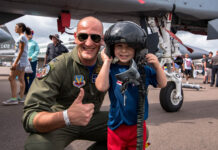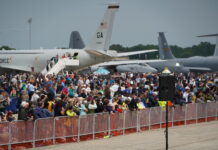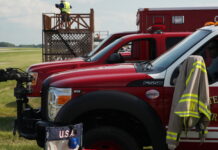Last October, I ran in my first and — hopefully — last marathon. I will confess that I am not built to run. I was born into a football family, and — in my youthful athletic days — my focus was on getting bigger…not quite the recipe for successful distance running. Because I was committed to completing the race in a respectable manner, I spent 16 weeks training four times each week. During that span of hundreds of miles of training runs, I experienced all sorts of weather: 100-degree heat, Hurricane Matthew, torrential downpours, and freezing rain. The weather phenomenon that stuck in my mind the most, however, was the wind.
Every outdoor training run that I did was an out-and-back course, so I spent exactly half of every run with a favorable tailwind component and the other half with an unfavorable headwind component. My general sense from talking with other runners tells me: it is a universal truth that runners prefer tailwinds. Obviously, getting any assistance from Mother Nature to help push me along the path was preferable to fighting a headwind on my own.
About halfway through my training, I realized a rather perplexing fact: I always felt the wind when I was running into it, but never when it was at my back. The same paradox held true for slight inclines: I would agonize through every hill, but — when I ran downhill on the very path that I had just run up — the path felt flat. While thinking about this during long runs, I concluded that what I was experiencing was far broader than simple mental tricks played on runners, but indicative of a natural human tendency. When faced with adversity, we tend to blame it on external factors, but when enjoying positive conditions, we’re inclined to believe we are the reason things are going well.
Just as my running with a tailwind fooled me into thinking I was just having a great run due to the decisions I had made—whether it was hydrating properly, stretching well beforehand, or getting a good night’s sleep—going through a successful air show season allowed me to reason that I was having a direct impact on its success. Conversely, when the air show season was going poorly, I would overemphasize the effect that outside factors beyond my control might have had, rather than acknowledge the role my missteps might have played in those events.
Once we recognize that unexpected conditions outside our control are inevitable – whether it is a strong headwind on a run, an unforeseen change in the air show schedule, a mechanical issue in an airplane, or a last minute requirement from the regulators – and remain consistent and continue to follow the policies we have put in place, then we have taken the most critical step toward enacting real and positive change. When running against a particularly challenging headwind, I would constantly tell myself to keep putting one foot in front of the other and force myself to ignore the impact of the wind on my pace. Similarly, as air show professionals, we must accept whatever setbacks we encounter and concentrate on doing our jobs well by following the path we have already set for ourselves.
Having the self-awareness to filter out the noise is a lesson that is applicable to all aspects of business and life. The more we practice the processes, practices and procedures we have implemented through careful planning and decision making, the easier it becomes to trust our ability to subconsciously summon those predetermined responses and behaviors. Eventually, we find that we are able to acknowledge the headwinds and minimize their impact on our performance.








